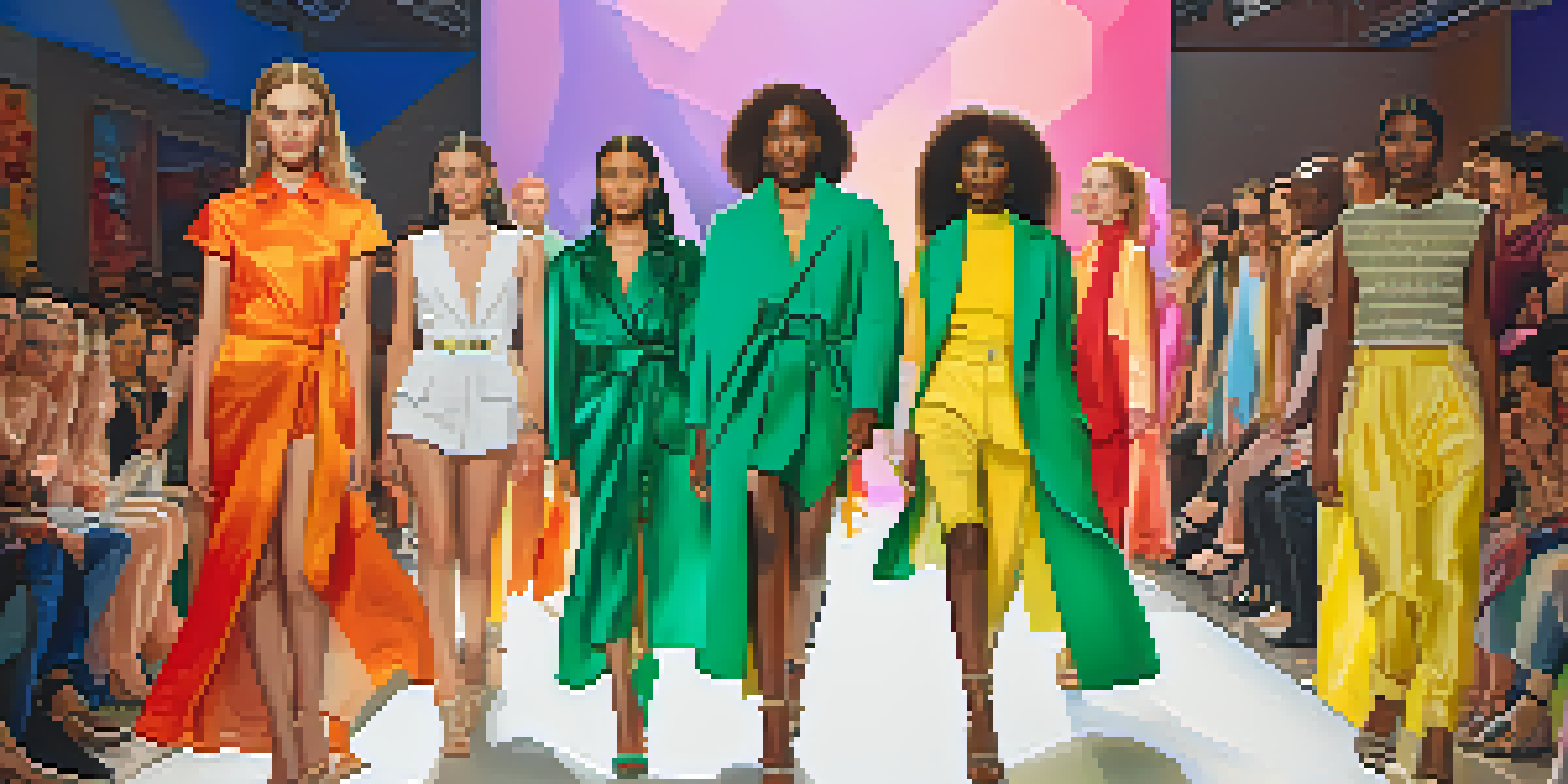Gender Representation: A Tool for Fashion Brand Identity

Understanding Gender Representation in Fashion
Gender representation in fashion refers to how different genders are portrayed in clothing styles, marketing, and branding. It's not just about clothing; it's about the values and narratives that brands choose to communicate. In recent years, there has been a shift towards inclusivity, prompting brands to rethink traditional gender norms in their identity.
Fashion is a language that creates itself in clothes to interpret reality.
This change means that fashion brands are now embracing a broader spectrum of gender identities rather than sticking to a binary understanding. For example, brands like ASOS and Zara have launched gender-neutral collections that appeal to all genders. This inclusivity not only reflects societal shifts but also resonates deeply with modern consumers seeking authenticity.
Ultimately, how a brand represents gender can significantly impact its identity. Brands that align their messaging with contemporary views on gender are likely to build stronger connections with their audience, fostering loyalty and trust in a crowded marketplace.
The Role of Marketing in Gender Representation
Marketing plays a crucial role in shaping how gender representation is perceived by consumers. The images and stories brands choose to highlight can either reinforce stereotypes or challenge them. For instance, campaigns featuring diverse models can convey a message of inclusivity, while traditional ads might perpetuate outdated norms.

A great example of effective marketing is the 'This is Gender' campaign by the fashion brand H&M, which showcased individuals of various gender identities wearing their clothing. This approach not only broadened their audience but also solidified their position as a progressive brand in the fashion industry. Such campaigns invite dialogue and encourage consumers to rethink their understanding of gender.
Inclusivity Drives Fashion Identity
Fashion brands are increasingly embracing diverse gender identities, reflecting societal shifts and resonating with modern consumers.
In essence, marketing strategies that reflect diverse gender representations can help brands stand out. They create an emotional connection with consumers who value authenticity and inclusivity, ensuring that the brand's identity aligns with the values of its audience.
Consumer Expectations and Brand Identity
Today's consumers are increasingly vocal about their expectations regarding brand values, particularly around gender representation. They demand authenticity and transparency from the brands they support. This shift means that a brand's identity must not only reflect its products but also its stance on social and cultural issues, including gender equality.
Diversity is being invited to the party; inclusion is being asked to dance.
For example, Nike's 'Equality' campaign took a stand on social justice, aligning its brand identity with the values of many consumers. This resonated strongly with audiences who appreciate brands that advocate for change, thereby enhancing customer loyalty. The expectation is clear: consumers want brands that embody what they stand for.
As a result, brands that strategically align their identity with consumer values regarding gender representation can create more meaningful relationships. This connection can lead to increased brand loyalty, as consumers feel they are part of a larger movement rather than just purchasing products.
The Impact of Social Media on Gender Representation
Social media has transformed the way brands communicate their identity and gender representation. Platforms like Instagram and TikTok allow brands to showcase diverse models and styles instantly, reaching a global audience. This democratization of fashion marketing means that brands can shift their narratives more quickly than ever before.
However, social media also holds brands accountable for their representation. Consumers can easily share their opinions, leading to swift repercussions for brands that fail to represent gender diversity appropriately. For instance, backlash against brands that only feature traditional gender roles in their campaigns has prompted many to reconsider their strategies.
Marketing Shapes Gender Perceptions
Effective marketing strategies that highlight diverse gender representations can foster emotional connections and brand loyalty.
Ultimately, social media serves as a double-edged sword for fashion brands. While it offers opportunities for broader representation, it also demands authenticity and a genuine commitment to inclusivity in their brand identity.
Challenges in Gender Representation for Brands
Despite the progress made, challenges remain for fashion brands seeking to improve their gender representation. One significant issue is the risk of tokenism, where brands include diverse representations without genuine commitment to inclusivity. This can lead to backlash from consumers who see through superficial efforts.
Moreover, brands must navigate the complexities of gender identity and expression, which can vary widely among individuals. This requires a deep understanding of the audience and a willingness to engage in ongoing conversations about gender norms. Brands like Savage X Fenty have excelled by actively involving their community in discussions about representation, setting a positive example.
Addressing these challenges is essential for brands that want to build authentic identities. By committing to genuine representation and engaging with diverse voices, fashion brands can not only avoid pitfalls but also set themselves apart in a competitive landscape.
Successful Case Studies in Gender Representation
Several fashion brands have emerged as leaders in gender representation, successfully integrating it into their identity. Brands like Telfar and Palomo Spain have become synonymous with gender-fluid fashion, showcasing collections that appeal to a wide range of identities. Their commitment to inclusivity has garnered a loyal following and set new standards in the industry.
Another notable example is the collaboration between Vogue and various gender-diverse models, which has highlighted the importance of representation in fashion media. This partnership has not only raised awareness but has also encouraged other brands to embrace similar practices, further pushing the envelope for gender representation in fashion.
Challenges of Genuine Representation
Brands must avoid tokenism and engage in meaningful conversations about gender to build authentic identities and relationships with consumers.
These case studies illustrate that when brands genuinely commit to gender representation, they can create powerful narratives that resonate with consumers. By leading by example, they inspire others in the industry to shift towards a more inclusive approach.
The Future of Gender Representation in Fashion
Looking ahead, the future of gender representation in fashion seems promising yet challenging. As societal norms continue to evolve, brands will need to adapt their identities to reflect these changes. This could mean expanding product lines to include more gender-neutral options or revising marketing strategies to prioritize inclusivity.
Additionally, technology is playing a role in this evolution. Innovations such as virtual fitting rooms and augmented reality can allow consumers to explore gender-neutral styles in a more interactive way. Brands that leverage these technologies may find themselves at the forefront of the changing landscape.

Ultimately, the future will require ongoing dialogue and reflection on gender representation. Fashion brands that are willing to listen, learn, and grow alongside their audience will likely thrive in this dynamic environment, solidifying their identities as champions of inclusivity.